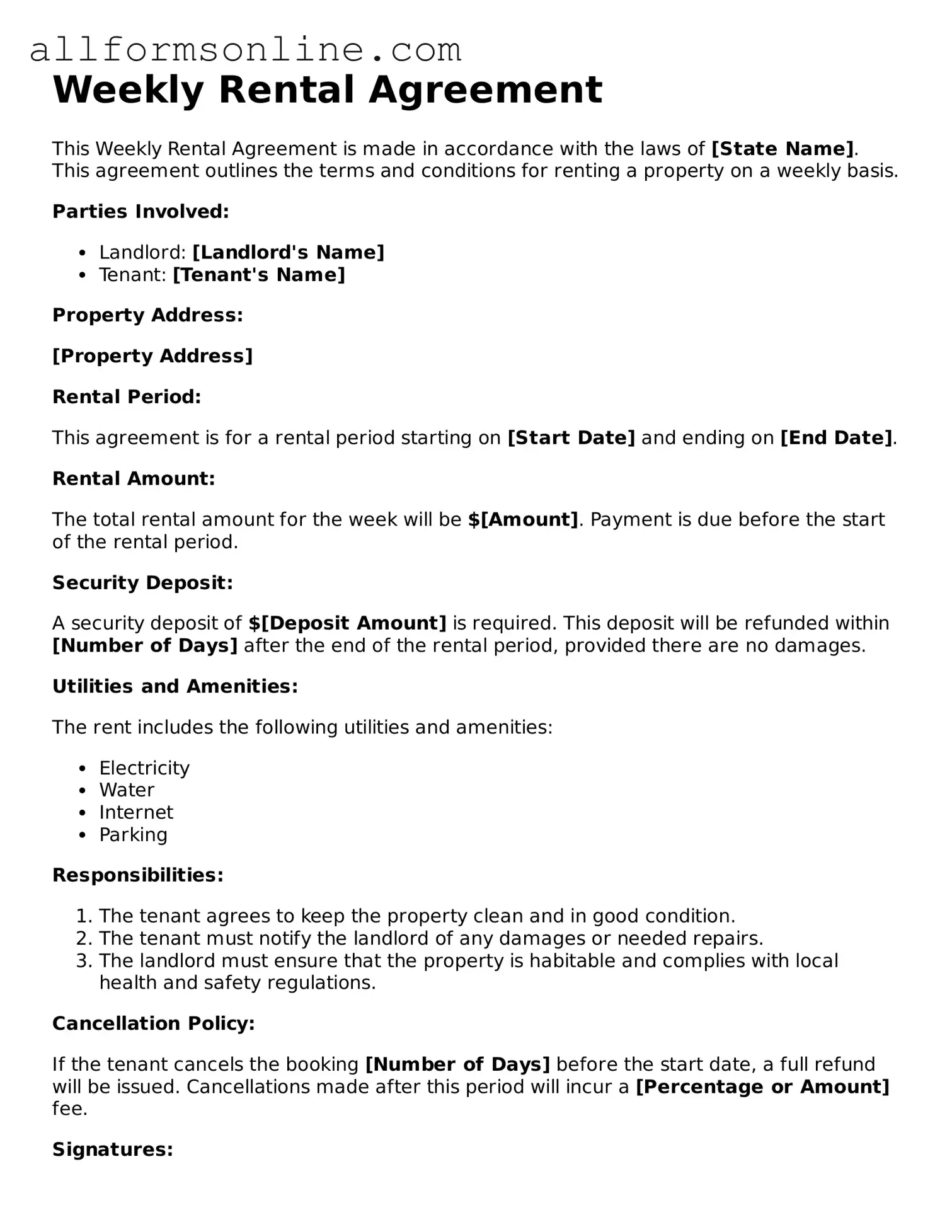What is a Weekly Rental Agreement?
A Weekly Rental Agreement is a legal document that outlines the terms and conditions for renting a property on a weekly basis. It typically includes details such as the rental amount, duration of the lease, and responsibilities of both the landlord and tenant. This type of agreement is commonly used for short-term rentals, such as vacation homes or temporary housing situations.
Who should use a Weekly Rental Agreement?
This agreement is ideal for landlords who wish to rent out their property for short periods, as well as tenants looking for flexible housing options. It can be used by individuals, families, or groups seeking temporary accommodations. Both parties benefit from having a clear understanding of their rights and obligations during the rental period.
What are the key components of a Weekly Rental Agreement?
A typical Weekly Rental Agreement includes several important components. These often consist of the names of the landlord and tenant, the rental property's address, the rental amount, payment due dates, the duration of the rental period, security deposit information, and rules regarding property use. Additional clauses may address pets, maintenance responsibilities, and termination conditions.
How is the rental amount determined?
The rental amount is usually set by the landlord based on various factors, including the property's location, size, amenities, and the local rental market. Landlords may also consider seasonal demand when determining the price. It is important for both parties to agree on a fair rental amount before signing the agreement.
What happens if the tenant wants to leave early?
If a tenant wishes to leave before the end of the rental period, they should refer to the terms outlined in the agreement. Many agreements include a clause that specifies the notice period required for early termination. Depending on the terms, the tenant may forfeit their security deposit or incur additional fees. Open communication with the landlord is essential in these situations.
Can the landlord enter the property during the rental period?
Generally, landlords have the right to enter the rental property for maintenance or inspections, but they must provide reasonable notice to the tenant. The specific notice period should be outlined in the agreement. Tenants should feel comfortable discussing any concerns they have regarding privacy and access with their landlord.
What is a security deposit, and is it required?
A security deposit is a sum of money that the tenant pays to the landlord before moving in. It serves as a safeguard against damages or unpaid rent. While not always required, many landlords ask for a security deposit. The amount can vary, and the agreement should specify how and when it will be returned to the tenant after the rental period ends.
What should a tenant do if they encounter issues during their rental period?
If a tenant faces problems, such as maintenance issues or disputes with the landlord, they should first refer to the terms of the agreement. It is advisable to communicate any concerns directly with the landlord to seek a resolution. Keeping a record of all communications can be helpful if further action is needed.
Is a Weekly Rental Agreement legally binding?
Yes, a Weekly Rental Agreement is legally binding once both parties sign it. This means that both the landlord and tenant are obligated to adhere to the terms outlined in the document. However, it is crucial for both parties to fully understand the agreement before signing, as it can impact their rights and responsibilities.
